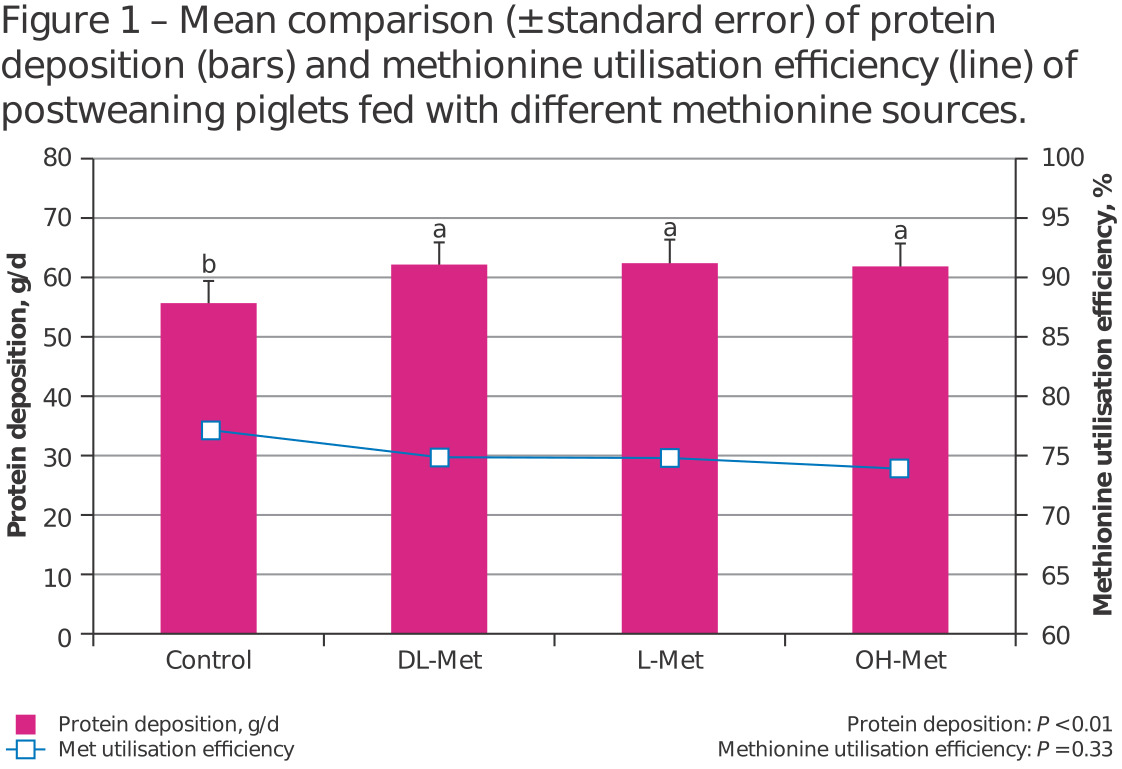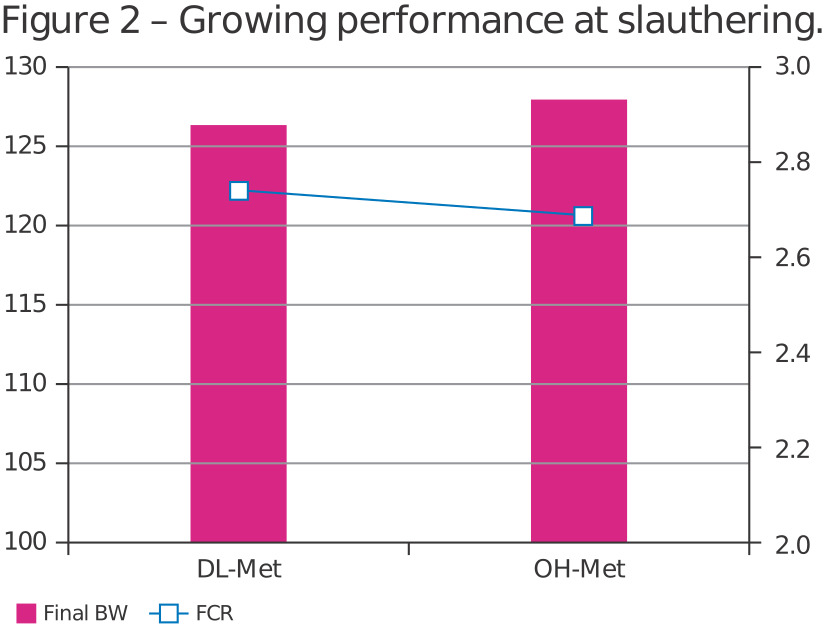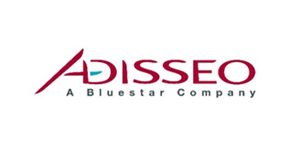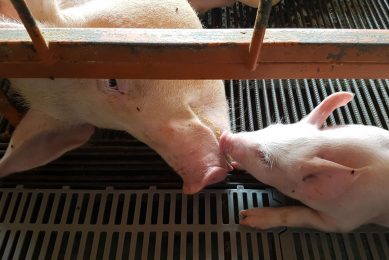Hydroxy-methionine effectively promotes growth performance in pigs

As natural resources become scarcer, it is essential to tailor the animals’ diets to their nutritional needs. The use of free-form amino acids in diets enables more precise formulations, reducing nitrogen output. In swine diets, methionine is often a limiting amino acid for growth and feed efficiency, driving extensive research into its optimal dietary supply.
Even if methionine is not the first limiting AA in swine nutrition, its deficiency will still negatively impact their growth. This is because even though methionine is primarily involved in protein deposition, it also plays a key role in immunity and antioxidant defence.
DL-methionine (DL-Met) and hydroxy methionine (OH-Met) are the most predominant sources commercially available, while feed-grade L-methionine (L-Met) or Ca-hydroxy methionine represent a marginal slice. Like other amino acids (except glycine), methionine has a chiral centre and chemically exists as two mirror image forms: D-methionine or L-methionine. Only L-methionine is biologically usable for animals, meaning D-methionine in DL-Met as well as the D&L forms of OH-Met must undergo bioconversion steps before being utilised.
Efficacy of methionine sources
But which source of methionine is the best to promote pigs’ growth? This was the subject of a recent publication that investigated the bioequivalence and the efficacy of utilisation of 3 methionine sources (DL-Met, L-Met and OH-Met) in post-weaning piglets (5-25 kg), using a meta-analysis approach. Following the PRISMA method, the authors updated the data set of a previous meta-analysis resulting in a final selection of 24 peer-reviewed journal articles (n = 104 treatment means). The selection criteria for these studies ensured minimal bias and enabled recalculations of diet nutrient contents using a single database.
 Bioequivalence was assessed using meta-regression models that compared piglet average daily gain (ADG) across sources of methionine. Efficiency of utilisation was evaluated by comparison of the ADG per unit of methionine intake relative to a control without any methionine source supplementation.
Bioequivalence was assessed using meta-regression models that compared piglet average daily gain (ADG) across sources of methionine. Efficiency of utilisation was evaluated by comparison of the ADG per unit of methionine intake relative to a control without any methionine source supplementation.In total, 12 linear meta-regression models were developed where independent variables such as methionine source, standardised ileal digestible (SID) methionine intake, SID total sulphur amino acid intake, and initial body weight were used in specific targeted combinations to predict piglet ADG. The authors concluded that all the sources of methionine were bioequivalent as there were no differences (P > 0.05) in how they influence the ADG of the piglets. This is evidenced by the estimated parameters of the meta-regression model which show that changing the methionine source does not significantly affect the ADG of piglets, as β1 and β2 were not significantly different from zero (Table 1).
Interestingly, when SID methionine intake was considered separately, data suggested a difference (P < 0.01) in the efficacy of DL-Met compared to L-Met. No other meta-regression model showed differences between sources of methionine (P > 0.05). As expected, methionine sources supplementation significantly improved protein deposition (P < 0.01) compared to the non-supplemented control.
Furthermore, supplementation of any of the sources of methionine resulted in an equal improvement of these parameters (Figure 2). Likewise, there was no difference in the efficiency of added methionine sources utilisation between the methionine sources (P = 0.33). These results indicate that, despite the known difference in the conversion of the different methionine enantiomers in the different sources to the biologically active form, piglets utilise them with the same efficacy and efficiency.
Pigs growing trial
To experimentally confirm the bioequivalence on equimolar basis, between the two main sources of methionine, Adisseo ran a trial in pigs from 105 to 168 days of age at the Akei Animal Research centre in Brazil. Pigs were divided into 2 groups and fed finisher diets (Finisher I and II) with either DL-Met or OH-Met to match animal requirements. All diets were formulated using the full matrix value of both sources of methionine, specifically considering active molecule content of 990 g for DL-Met, and 880 g for OH-Met.
 At end of the trial, no statistical differences between the two methionine sources were observed for both FCR and final body weight (Figure 2). This growing trial is in line with the findings from the meta-analysis previous reported, thus confirming the equivalence of DL-Met and OH-Met to support the pigs’ growth and validating once again that liquid OH-Met is an efficient source of methionine for farm animals, based on its concentration.
At end of the trial, no statistical differences between the two methionine sources were observed for both FCR and final body weight (Figure 2). This growing trial is in line with the findings from the meta-analysis previous reported, thus confirming the equivalence of DL-Met and OH-Met to support the pigs’ growth and validating once again that liquid OH-Met is an efficient source of methionine for farm animals, based on its concentration.
Taken together, meta-analysis in piglets and scientific trial in growing pigs reaffirm that liquid OH-Methionine is just as efficient as other methionine sources in promoting pig growth.
References available upon request.



